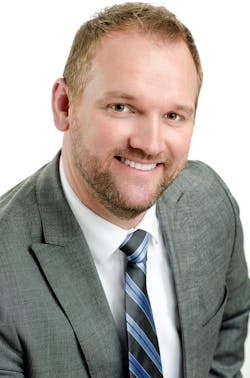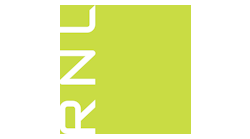A registered architect with 14 years' experience and head of RNL's Los Angeles office, Aaron Kelly delivers cutting-edge, award-winning public transportation projects across the nation. When he joined RNL in 1999, he brought along a solid background in construction as the son of a brick mason and team leadership expertise through his NCAA Football career at North Dakota State University.
Over his career he has had extraordinary success in the design of public transit facilities of all types: bus and rail maintenance facilities, intermodal passenger terminals and public works facilities. Kelly works to support the goals of transportation agencies by creating safe, efficient, cost-effective, people-oriented and visually striking facilities.
Since 2009 Kelly has led the design of three major projects serving Los Angeles Metro; the $50 million El Monte Transit Center (LEED Gold), the $75 million Division 13 Bus Operations/Maintenance Facility (LEED Gold) and the $80 million Expo Rail Operations/Maintenance Facility (LEED Gold and Net Zero Energy ready). Currently Kelly is leading the design of the $20 million city of Torrance, Calif., Regional Transit Center (LEED Platinum).
On a national scale, Kelly has played critical leadership roles in the design of the Kenosha, Wisc., Transit Bus Operations/Maintenance Facility, the Golden Public Works Facility in Golden, Colo., and the TRANSPO Emil "Lucky" Reznik Bus Operations/Maintenance Facility, in South Bend, Ind., the first LEED-Platinum maintenance facility in the nation.
As a LEED-accredited professional, Kelly incorporates innovative sustainability strategies into transportation design. In developing the El Monte Transit Center, when it is completed in fall 2012 it will be the busiest bus terminal west of Chicago and is the recipient of the 2010 American Institute of Architects "Next LA" Citation Award.
Kelly is also an active member of several public transit organizations: a member of APTA's Sustainability Committee, the Maintenance Committee with the California Transit Association, the Transit Coalition and Mobility 21. Kelly speaks annually at many conferences presenting "Greening Your Garage," "Turning Green into Greenbacks," and "Intelligent Bus Barns" as part of an ongoing effort to share his knowledge of sustainability and design excellence within the transit industry.
Being an Architect for Transit
"When I was a kid all I ever wanted to do was build forts and tree-houses. I love to spend my weekends building things. My job consists of implementing ideas that create a better built environment and it's great to have your job feel like what you choose to do for fun. What I enjoy most about being a transportation architect is the ability to transform how people conduct their daily lives. Giving a transit rider a fantastic building to experience or creating a maintenance facility that lets a mechanic excel at his or her job are both rewarding outcomes of my efforts. Beyond that I really enjoy the team atmosphere of the design and construction industry. The design and construction process feel intuitive to me. Maybe it's my sports background, but when each person has a specific role and we can help each other do those roles better, we all come out successfully. I love it when people exceed one another's expectations."
Transforming a Community
"Most recently I had the opportunity to lead the El Monte Transit Center project for LA Metro that will house Metro, Foothill Transit and Greyhound bus services for 40,000 passengers per day. The project is set to open toward the end of this year and creating a piece of architecture that has a positive transformational impact on that many people and its community, is very exciting to be a part of. We had a very successful design process with a visionary client and a world-class design team. That project has opened up doors for my team and me to continue to design world-class transit and maintenance facilities."
Connecting a Neighborhood
"One of the great things about the transit industry is the commonality of its reach. Everyone benefits from public transit and it's a noble cause to be associated with. It's fantastic to have your client pat you on the back for taking the bus or train to a meeting. The feeling you get from seeing people using a transit facility you've created is gratifying. Most of the projects in the public transit industry I've done are welcomed into their neighborhoods and not perceived as an imposition. Perhaps that is a sign we're doing something right in our design process — treating the public with the same respect as the agency — ultimately serving all stakeholders with a positive solution. That doesn't usually happen very much in the private sector."
Transit Investment
"I hope the investment of public resources in the American transit system maintains a level of quality like we had 100 years ago or like much of Europe and Asia have. When we are penny-wise and pound-foolish about investments in the built environment, we're wasting our hard-earned tax dollars. I'd much rather buy one quality item that will last for generations than many cheap throw-away items. That mentality needs to permeate our collective mentality about transit investment as well. Cheap, throw-away facilities are a waste for us all. They cost more to maintain, they need to be replaced after the short life spans are expired, and they convey a message that public transit isn't valuable. I hope for a future of public transit that creates civic buildings that invoke pride in the public that it serves."




